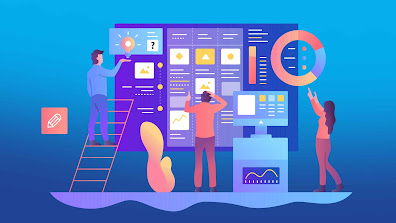AI-Augmented Development: The Key to Personalized Software Solutions
In today's digital landscape,
personalized experiences are more important than ever. Users expect software
solutions tailored to their specific needs, whether it’s a customized user
interface, personalized content recommendations, or adaptive features that
cater to individual preferences. AI-augmented development is emerging as a key
driver in delivering these personalized software solutions, enabling businesses
to meet and exceed user expectations.
The Rise of Personalization in
Software
Personalization in software
involves creating experiences that are tailored to individual users based on
their behaviors, preferences, and interactions. This approach has become
increasingly popular across various industries, from e-commerce and healthcare
to entertainment and education. By providing users with personalized
experiences, companies can enhance user satisfaction, improve engagement, and
build stronger customer loyalty.
However, developing personalized
software solutions is no easy task. It requires a deep understanding of user
data, the ability to make sense of that data, and the capability to adapt
software features dynamically. This is where AI-augmented
development comes into play.
How AI-Augmented Development
Enables Personalization
- Data-Driven Insights
AI-powered tools can analyze vast amounts of user data to uncover patterns, preferences, and trends. By leveraging machine learning algorithms, AI can predict user needs and behaviors with a high degree of accuracy. This enables developers to create software that adapts to individual users in real-time, offering personalized features, recommendations, and content. For example, an AI-driven recommendation engine can suggest products or services based on a user’s browsing history, leading to a more engaging and relevant experience. - Automated Customization
AI-augmented development allows for the automation of many aspects of personalization. For instance, AI can automatically adjust the user interface based on individual preferences, such as changing the layout, color scheme, or font size to match the user’s style. Similarly, AI can customize workflows and features based on how users interact with the software, ensuring that each user has an experience tailored to their unique needs. This level of automation not only enhances the user experience but also reduces the workload for developers, allowing them to focus on more complex tasks. - Adaptive Learning
One of the most powerful aspects of AI in software development is its ability to learn and adapt over time. AI-augmented systems can continuously monitor user interactions and refine their personalization strategies based on new data. This means that software solutions become more personalized and effective as they are used, providing an ever-improving experience for users. For instance, a learning management system (LMS) could adapt the content and difficulty level of courses based on a student’s performance and learning style, leading to more effective education outcomes. - Enhanced User Engagement
Personalization is a key factor in driving user engagement. AI-augmented development helps create software that not only meets users' needs but anticipates them. By delivering relevant content, features, and interactions, AI-powered software can keep users engaged for longer periods. This is particularly important in industries like e-commerce, where personalized recommendations can lead to higher conversion rates, or in entertainment, where personalized content can boost user retention.
Challenges and Considerations
While AI-augmented development
offers significant benefits, it also presents challenges. Data privacy is a
major concern, as personalized software relies heavily on user data. Developers
must ensure that AI systems are designed with privacy in mind, following best
practices for data protection and compliance with regulations like GDPR.
Moreover, the complexity of AI
algorithms can make it difficult for developers to fully understand and control
the personalization process. It’s crucial to strike a balance between
automation and human oversight to ensure that AI-driven personalization aligns
with user expectations and ethical standards.
Conclusion: The Future of
Personalized Software
AI-augmented development is
revolutionizing the way software is personalized, offering tools and
capabilities that were previously unattainable. By harnessing the power of AI,
developers can create software solutions that are not only more responsive and
adaptive but also more engaging and effective. As AI technology continues to
advance, the potential for even more sophisticated and personalized software
solutions will grow, making AI-augmented development a key factor in the future
of software innovation. For businesses looking to differentiate themselves in a
competitive market, investing in AI-driven personalization is a strategic move
that promises significant rewards.



Comments
Post a Comment